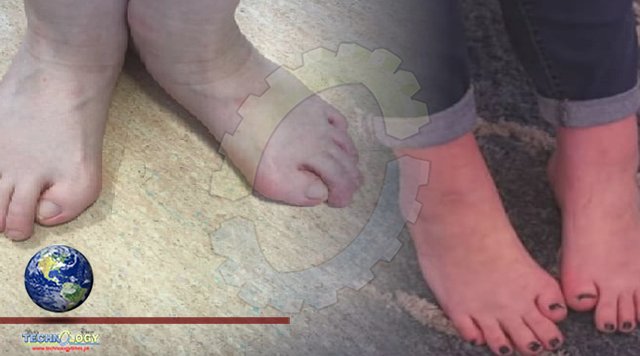Ultra-Rare Disease , A three-year-long study has tracked dozens of patients with an ultra-rare disorder that gradually turns muscle, tendons, and ligaments to bone.

The lifelong, irreversible condition is known as fibrodysplasia ossificans progressiva (FOP). While estimates on its prevalence vary, confirmed cases occur in roughly one out of every 1 to 2 million births. Only about 800 patients have been diagnosed with FOP worldwide, and in 2006, it was found that 97 percent of patients harbor the same genetic variant of the disease. This mutation occurs in a gene that codes for a receptor regulating bone development, seeming to cause stem cells to produce bone tissue in places that typically shouldn’t have it. Given the severity and rarity of FOP, it’s hoped the findings of the current research will allow doctors to better meet the medical needs of underserved patients. Ultra-Rare Disease, The progressive calcification of soft tissue from FOP isn’t constant; it comes in waves. The episodes usually begin in childhood and tend to start in the neck and shoulders, causing ribbons, sheets, and plates of bone to form. Spanning joints and articulations, the rigid tissue progressively limits mobility, locking body parts into place and reducing the lifespan of those affected. Not everyone with FOP shows the same rate of calcification, but once bone is laid down in a part of the body, it is permanent. Most people require a wheelchair by the age of 20. Unfortunately, today, there are no available treatments for FOP, although the pain and swelling experienced by patients can be somewhat alleviated with medicine.
Over the course of a patient’s life, sickness and physical trauma can cause flare-ups of muscle swelling and inflammation that can last days to months, often leading to bone formation afterwards. If these events can be limited, there’s a chance the disorder’s progression can be stalled. The recent long-term study is among the first to really delve into the progression of FOP among 114 patients. Ultra-Rare Disease, Previous studies on the one-in-a-million disorder have merely been retrospective in nature or based on patient reports. Only 33 people completed the full three-year study with regular check-ups (most left to partake in clinical trials for possible interventions). But in the end, the authors found that 82 patients (more than 70 percent of the original cohort) reported a combined 229 flare-up events, usually in the upper back, but also in the hip, shoulder, and lower spine. Twelve weeks after a flare-up, researchers often found new bone had accumulated at the site of inflammation or pain. Even though FOP’s progression seems to slow with age, 70 percent of individuals aged 25 to 65 years showed new bone volume at an annual study check-up. The most common symptoms reported during these visits were severe pain, soft tissue swelling, and highly restricted movement. “Results from individuals receiving standard care for up to 3 years in this natural history study show the debilitating effect and progressive nature of FOP cross-sectionally and longitudinally, with greatest progression during childhood and early adulthood,” the authors conclude.
The findings reveal the most common ongoing medication used by patients are non-steroidal anti-inflammatory drugs. But during the study, nearly 80 percent of participants started a new medication, which suggests they are desperately trying to find something that can help them feel better. FOP doesn’t just impact the musculoskeletal system, either. Patients in the study were commonly found to suffer from respiratory issues, like a reduced ability to expand the chest, and hearing loss. The former can even be fatal. Ultra-Rare Disease, Every single one of the participants showed inward malformation in the growth of their big toes, which supports the idea that this may be one of the first signs of the disorder. It is thought to be present from birth. If doctors can keep their eyes out for this clear and early marker of FOP, then genetic screening could be done early to speed up diagnosis and possibly delay the progression of the disease. If diagnosis takes too long, and the condition and its symptoms are not well managed, there’s more of a chance that injury, biopsy, muscle fatigue, or intramuscular injections can accelerate the hardening of soft tissue. A four-day course of high-dose corticosteroids during a flare-up has been shown to be quite effective at reducing the inflammation associated with excess bone development. The new research, in combination with ongoing clinical trials, could help improve the lives of people with FOP in the years to come.
Source: This news is originally published by sciencealert